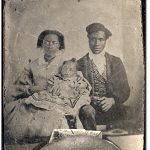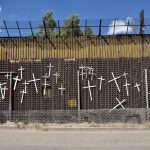First Nations Public Library Week: February 10–15, 2014
This week is First Nations Public Library Week in Ontario. The theme this year is “Celebrating Mother Earth.” What better way to celebrate than to learn more about Indigenous literary history in Canada? Check out our guide to Indigenous Literatures in Canada—it’s a great resource for students, instructors, and anyone who wants to learn more […]

Analyzing Moon of the Crusted Snow
In the previous section, we considered critical approaches that might guide our reading of Moon of the Crusted Snow as an example of Anishinaabe horror. In this section, we will apply those approaches by conducting a focused analysis of key excerpts from the novel. Time and/as Infrastructure While reading and discussing Moon of the Crusted Snow, […]

The Future(s) of Indigenous Horror: Moon of the Crusted Snow
Gage Karahkwí:io Diabo In this chapter, we will explore approaches to the topic of Indigenous horror as it applies to Anishinaabe writer Waubgeshig Rice’s apocalyptic horror novel Moon of the Crusted Snow. This introduction provides context for the novel by discussing its place within recent trends in genre studies and Indigenous literary studies. In the following sections, […]

Literary Analyses of Obasan
Memory is a key theme in Joy Kogawa’s Obasan, and it is often connected to speech and silence in the novel. For example, Aunt Emily believes that it is important to remember the past and works hard not to let anyone, including her family, community, and the Canadian government, forget traumatic historical events. Obasan, in […]

Scholarship on Motivations
Identifying Key Motivations Literature scholars participate in a larger shared community of knowledge through their research and analyses of literary texts. Research in the fields of rhetoric and genres studies has identified a number of characteristic motivations that are shared within this community or field. In this section, we will consider five of these motivations, […]
Scholarship at the Intersection of Indigenous and Diasporic Literature
In their 2005 collection of essays, Minor Transnationalisms, Francoise Lionnet and Shu-mei Shih explore the preoccupation they find in cultural studies with “vertical analysis” (11). What they observe is that cultural studies dedicates most of its time and attention to the relationships between dominant and non-dominant communities defined by significant imbalances in power, resources, or […]

Indigenous and Diasporic Intersections in Canadian Literature
L. Camille van der Marel Finding the Intersections Indigenous and diasporic texts are often taught in the same Canadian literature classes and have shared concerns with race, displacement, identity, and community. That said, literary scholars rarely place these literatures in dialogue with one another. This chapter offers guidance for those trying to see, discuss, and […]

Scholarship on Burning Vision
Indigenous and Diasporic Interconnections Clements’ work—provocative, cutting-edge, theatrically astonishing—has received critical acclaim in reviews in both mainstream newspapers and Indigenous media outlets, both nationally and internationally. In addition, scholarly interest in Indigenous and diasporic interconnections in Clements’ work has grown exponentially, as evidenced by numerous articles and book chapters on her work over the past […]
Activities and Resources for Burning Vision
On June 11, 2008, Prime Minister Stephen Harper issued a formal apology to former students of Indian Residential Schools: you can read or watch the apology. Compare and contrast this apology to those made within Burning Vision. How does Clements’ play encourage the reader to think critically about sincerity, motivation, and consequences with respect to […]

Border Studies Scholarship
What is Border Studies? The Canada-US border is often compared to the Mexico-US border, where Border Studies originated and from which Canada-US Border Studies both draws and departs. The Mexico-US border, with its heightened securitization and prominence in US political anxieties, and as a site of dangerous crossings for undocumented migrants, seems to contrast sharply […]








 ©
©